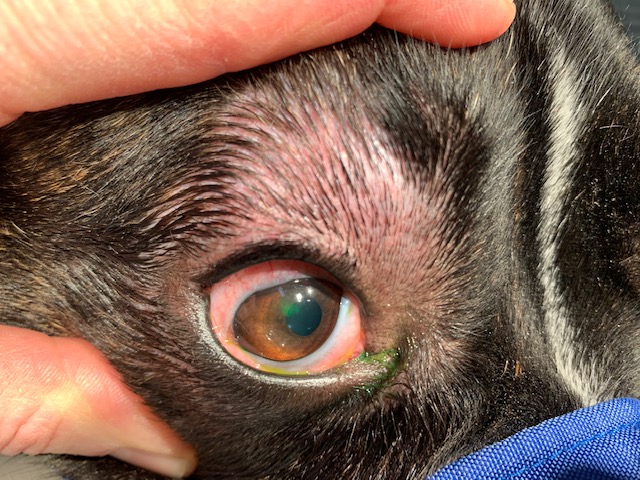
We can see on the picture a green area : the corneal ulcer retains the fluorescein coloration during the test. The ulcer is caused by a distichiasis on the upper eyelid of this dog.
Who has not seen a cute little white dog with brown or reddish staining under the eyes?
This discoloration is generally caused by the pigment present in the tears in an animal that has chronically watery eyes. The excessive tearing is sometimes caused by small eyelashes that rub on the surface of the eye.
For many dogs, this only represents a cosmetic issue, but in some cases there are more serious consequences.
If the constant rubbing triggers a pigment deposit on the cornea or if it leads to the formation of ulcers or scratches on the eye surface or leads to any discomfort, it must be addressed.
There are two main types of problematic eyelashes: distichia and ectopic cilia.
The former are found on the border of the eyelid but the latter may be well hidden under the eyelid.
In both instances, an adequate sedation and an operating microscope greatly increase the odds of a proper diagnosis.
A procedure similar to electrolysis can be used to manage these situations.
We are fortunate to have all the necessary equipment at our disposal to manage our patients who suffer from one of these conditions.
